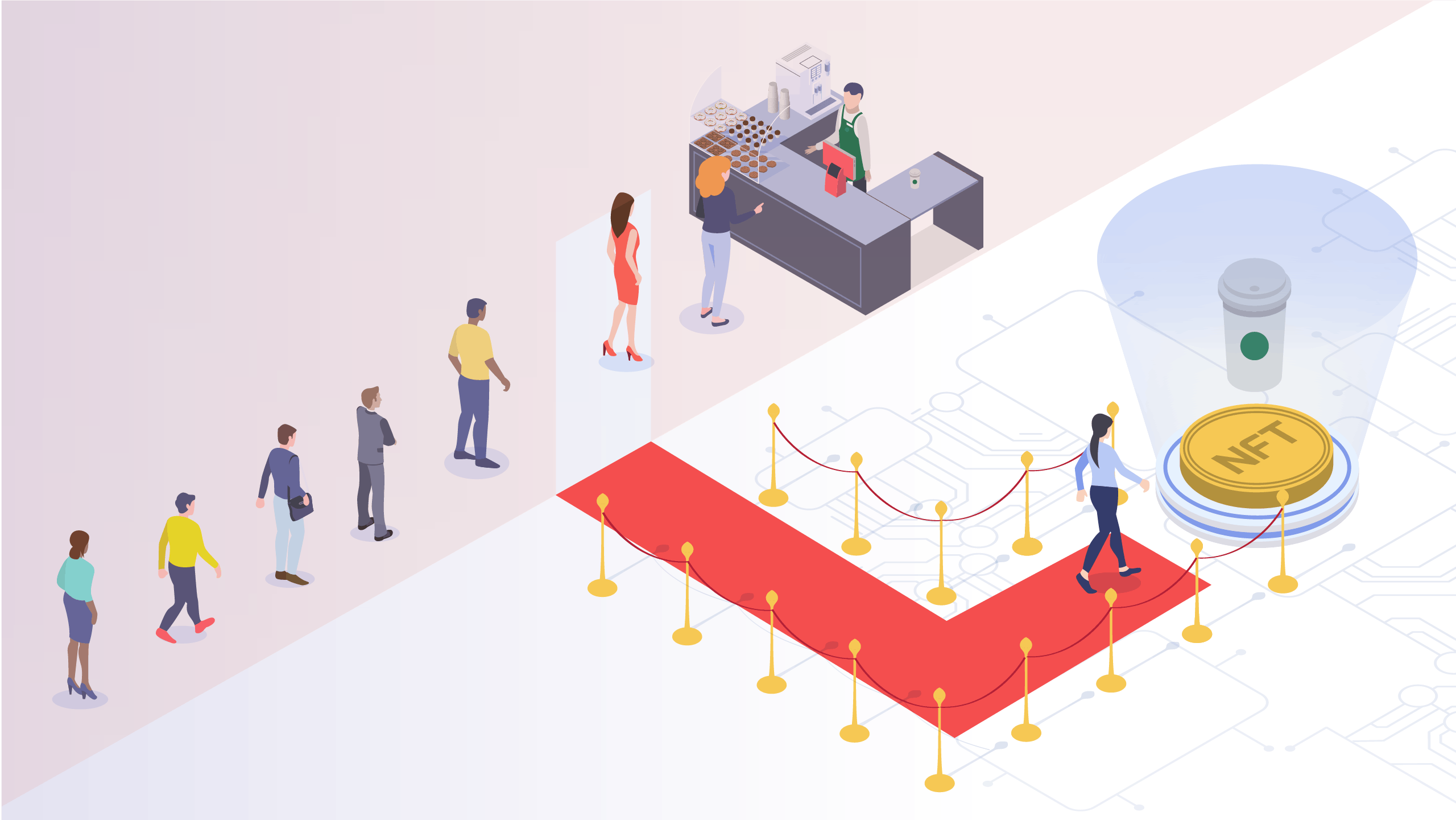What Kinds of Opportunities Will Web3 Unlock For Your Business?

Web3 promises to transform the internet and the economy. How can businesses be ready for what’s next?
As we’ve said previously, Web3 is here and it’s not going away. While the technology is nearly a decade old, it only recently reached the mainstream, bringing with it a huge opportunity for companies to capitalize, innovate, and forge deeper relationships with their clients, partners, and customers. We’re not just talking about NFTs and meme culture; Web3 being in its early stages makes it a prime area to experiment and connect with customers in new ways.
While crypto has made headlines for years, with venture firms dropping ever more money into the space despite a crash in asset prices, that’s not the only place where organizations can get involved. Web3 represents a big opportunity for brands and companies to start playing around, seeing what works, and experimenting. It’s only the beginning of a very long journey.
How can businesses take advantage? First, be mindful that the hype around Web3 moves faster than reality. Web3 isn’t changing the world…yet, but businesses should be paying attention, just as they did with other early and slow-to-develop technologies, such as the growth of mobile. Stay in, dedicate resources to learning, watching, and experimenting. Participate mindfully.
Find a partner in-the-know
It helps if you have a guide, such as a team that’s played in the Web3 space before. Agencies like Modus can assist with that innovation by standing up a team dedicated to Web3 experimentation. For a recent project with Gore, we developed a Web3 business case by building out research, ideation, prototyping, and design thinking within a short period of time. We can spot Web3 opportunities and ideas to examine that can drive a business forward into the future.
Consider the customer experience

We’re early in the Web3 timeline, but we’re already seeing potential use cases in multiple industries. Starbucks is hopping into the game with a Web3-powered loyalty program called Starbucks Odyssey that connects NFTs with the essence of the brand: coffee and community. Loyalty programs are an obvious place for companies to start experimenting in the Web3 space, as a way to provide tangible rewards to their biggest fans and supporters. Transitioning a loyalty program to Web3 is an opportunity for an organization to learn about its customers and their appetite for Web3 while learning what works and what doesn’t in a relatively low-stakes environment.
We know community breeds loyalty, but people change and trends pass. Because of the permanent nature of the blockchain, NFTs offer businesses the ideal chance to create and hone long-term relationships with their customers. When anyone links an NFT to their wallet, they will be indefinitely connected to the brand as long as they hold that NFT.
According to a recent Harris Report, “72% of millennials prefer to spend money on experiences rather than on material things.” Web3 technology has the potential to elevate customer loyalty and brand engagement in ways not yet seen.
The idea of giving real-world value to digital assets is a game changer. Literally. By tokenizing in-game items, the gaming industry is ready to take advantage of Web3 interoperability (when data and values can be transferred across different networks). In mobile games alone there is an estimated $175 billion worth of "swords, skins and potions." That is real money that has been converted into items that cannot be used in another game, transferred to another account, or converted back into real money. A tokenized item becomes a tradable crypto asset, and as you know, on the blockchain what you own is yours to trade, resell, or collect even if the game goes bust.
DeFi-powered financial services
Financial systems, specifically Decentralized Finance (also known as DeFi), is a second area ripe for experimentation and creative use cases. DeFi provides a separate economic structure, using peer-to-peer payments enabled by smart contracts and verified by the blockchain protocol. DeFi has the potential to sidestep banks and centralized financial institutions giving people the ability to conduct transactions with ease, among themselves. No financial managers, no complicated paperwork or red tape.
In the world of commercial banks and other financial institutions, those entities have power over your funds. They can freeze your assets, and you are limited by their hours of operation and cash reserves for example. In a decentralized financial world those limitations disappear. As long as you have an internet connection and a crypto wallet,you can move your assets anywhere at any time, without asking for permission, waiting for long transfers to finish, and paying expensive fees.
With DeFi, there’s also a dispersal of risk. For example, if a bank holds all of its customer data in one spot (or behind a “p@ssw0rd!” such as this,) a hacker only needs to infiltrate that particular site to gain access to a vast amount of data. In contrast, storing that data across thousands of locations or removing that single point of failure could drastically improve security.
Consider the popular crypto wallet MetaMask, available as both a mobile app and a (Web2) browser extension. Here public and private keys are generated and kept on your device (unlike today’s passwords) and it stores no personal information. MetaMask allows users to interact with the blockchain, to buy and sell crypto assets and to connect with decentralized applications (or “dapps”) and Web3 services.
It has been said that the future will be tokenized, and while we may not see house deeds and car titles on the blockchain anytime soon, as Web3 transforms top-down financial systems a peer-to-peer global trading economy will emerge. Ironically, was it not bartering the reason we invented money?
Patient-owned healthcare data

The future of healthcare is another area with plentiful Web3 use cases. Consider electronic health records. Rather than a centralized repository for our health information, the vision for Web3 could include a healthcare system where information is stored on a blockchain ledger that patients can control and manage—a crucial breakthrough that could help people live healthier and more manageable lives. Individuals would control their own health information, able to give it out on an as-needed basis to doctors and other healthcare providers.
Other potential benefits include increased security (like DeFi, healthcare data on the blockchain is distributed) and better traceability to monitor sensitive activities like frozen eggs or blood donations. Better management of critical healthcare activities like these can lead to life-changing, life-saving results.
What are you waiting for?
These are just a few of the many possible use cases. The only limit is imagination. The key to a Web3 experiment is to start by actually participating and exploring, whether through apps, trades, or discussions on platforms like Discord, Twitter Spaces or Clubhouse, and bring your customers with you. To keep them engaged, you’ll likely need to do some education and use traditional marketing to shift attention towards your Web3 projects. You can also partner with people inside Web3 communities that are relevant to your brand. It’s never too early to start experimenting.


